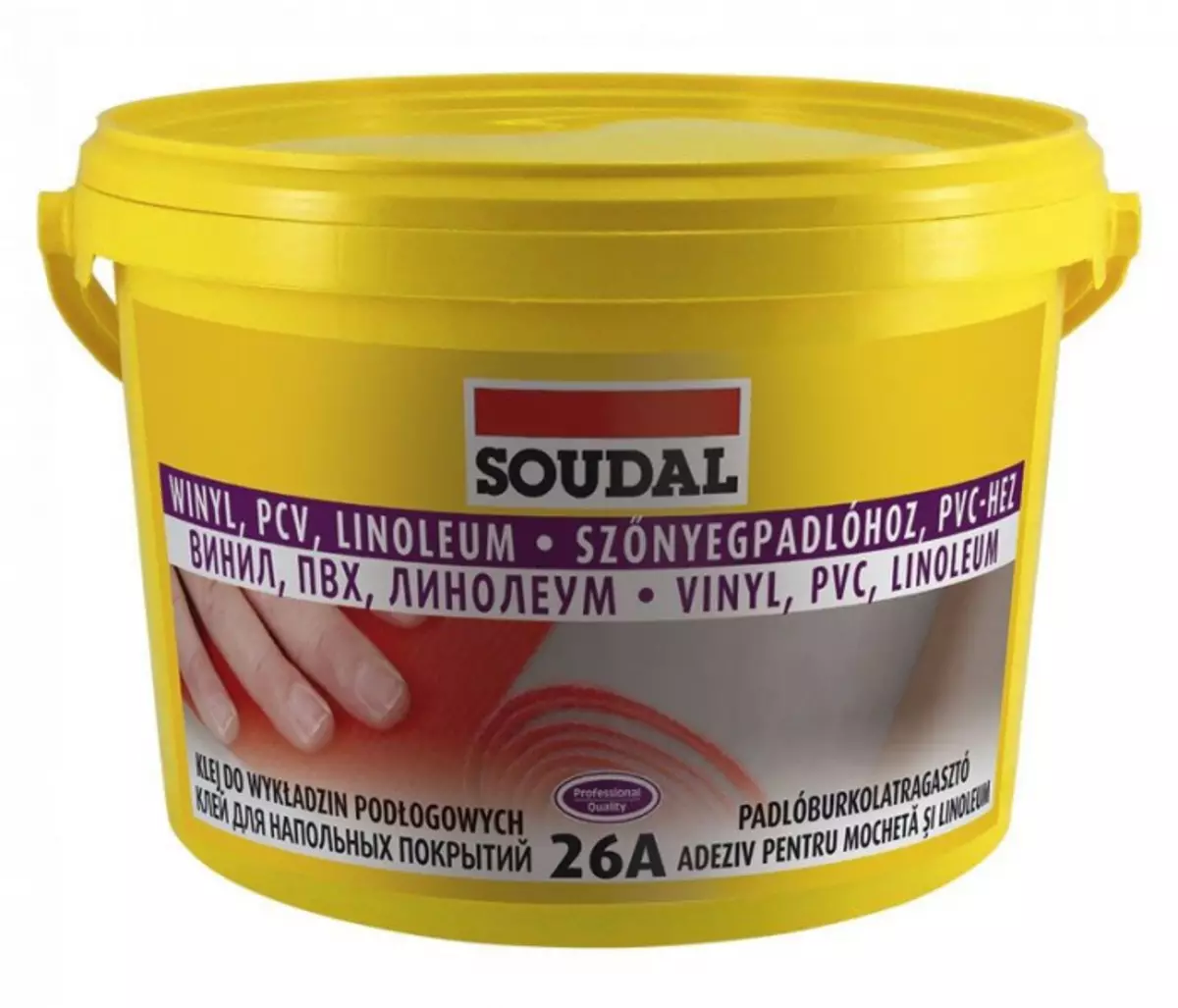
To each type of linoleum, it is necessary to select different glue taking into account the characteristics of the coating. Properly selected glue will increase the life of the coating and minimize the possible deformation of the linoleum.
Specialists recommend using special adhesive bustide for linoleum. In this article, we will consider the types of adhesive substances in detail, their consumption is 1m2 and the benefits of application.
Advantages and disadvantages of gluing linoleum
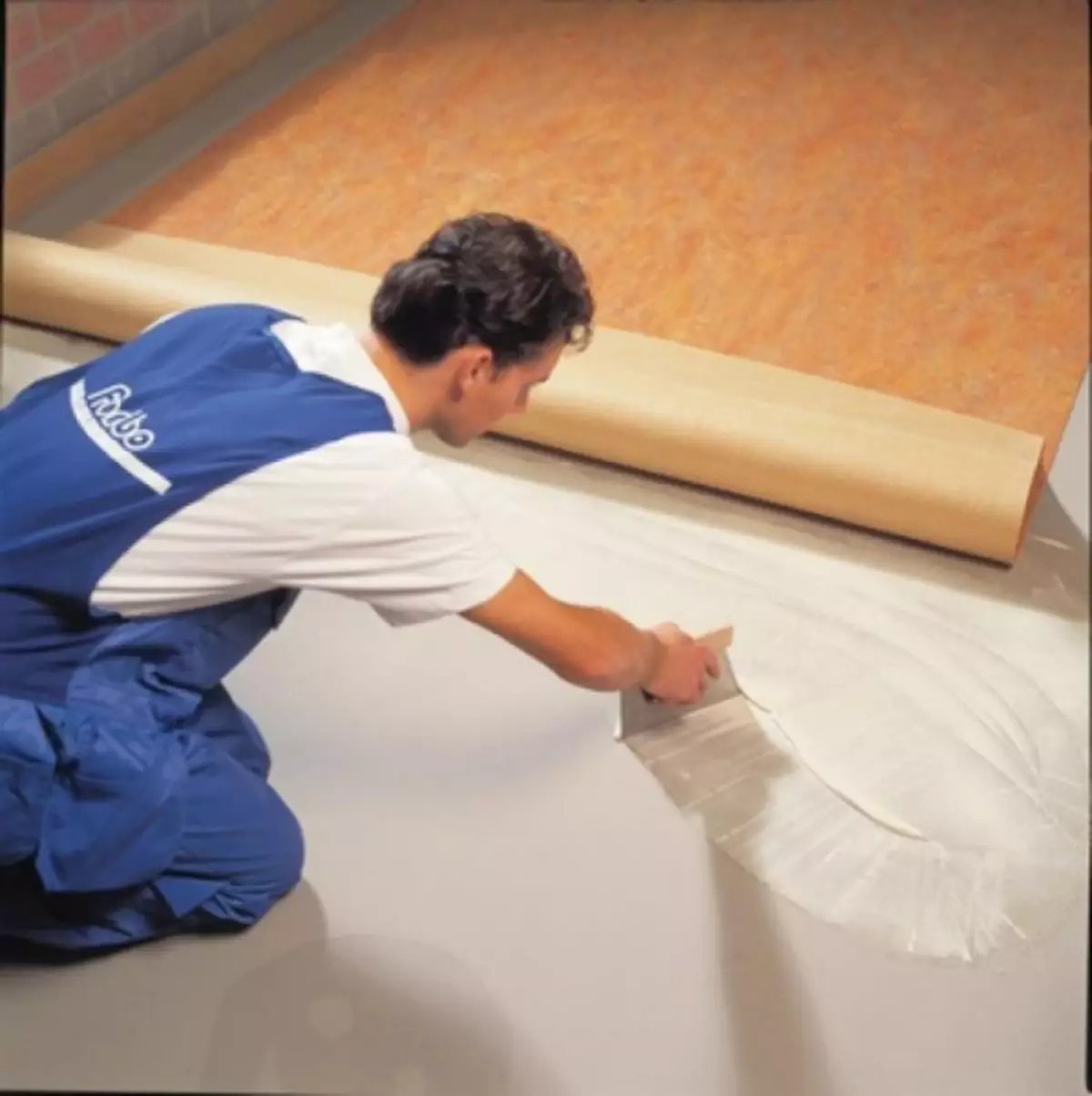
On glued coating is not deformed throughout the life
Properly selected adhesive solution will help ensure a good coating adhesion with floor. The pluses of using glue for linoleum include:
- High-quality coating fasteners will make it possible to increase the strength and period of operation.
- Printing significantly increases the strength of the joints between the sheets.
- The glue will avoid the deformation of the coating.
- The legs from the chairs or sofa will not leave sweatings on the coating, fixed using the substance.
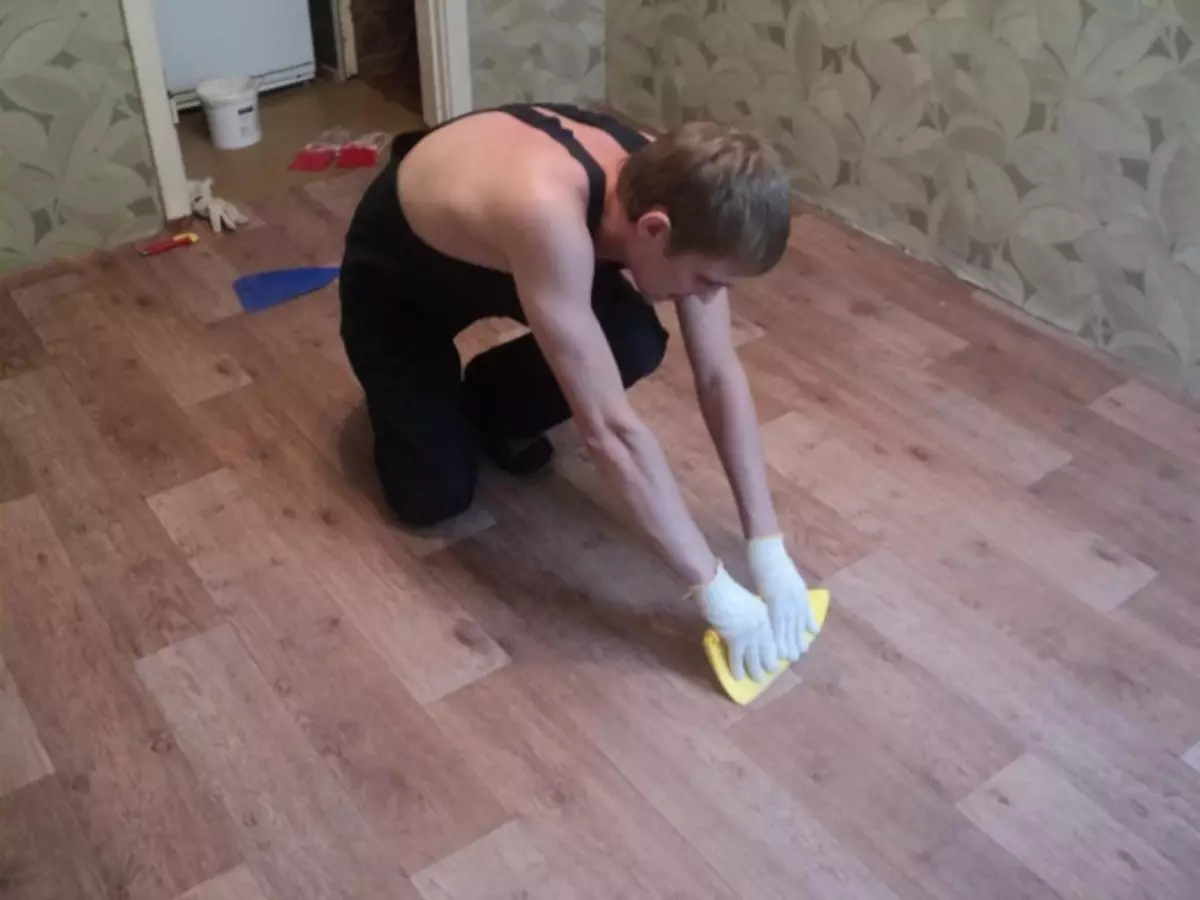
The disadvantage of such solutions is the need to wait for their drying.
Each type of glue has its own grasp and frost period, which is specified on the package.
It is possible to obtain further processing and installation of furniture only after the expiration date.
Another disadvantage of the application of compositions is the impossibility of aligning the surface. If the floor is uneven, in front of the flooring of the linoleum will be needed to pre-make a screed.
Types of glue and their consumption
All glue for linoleum is divided into 2 main types:
- dispersive;
- reactionary.
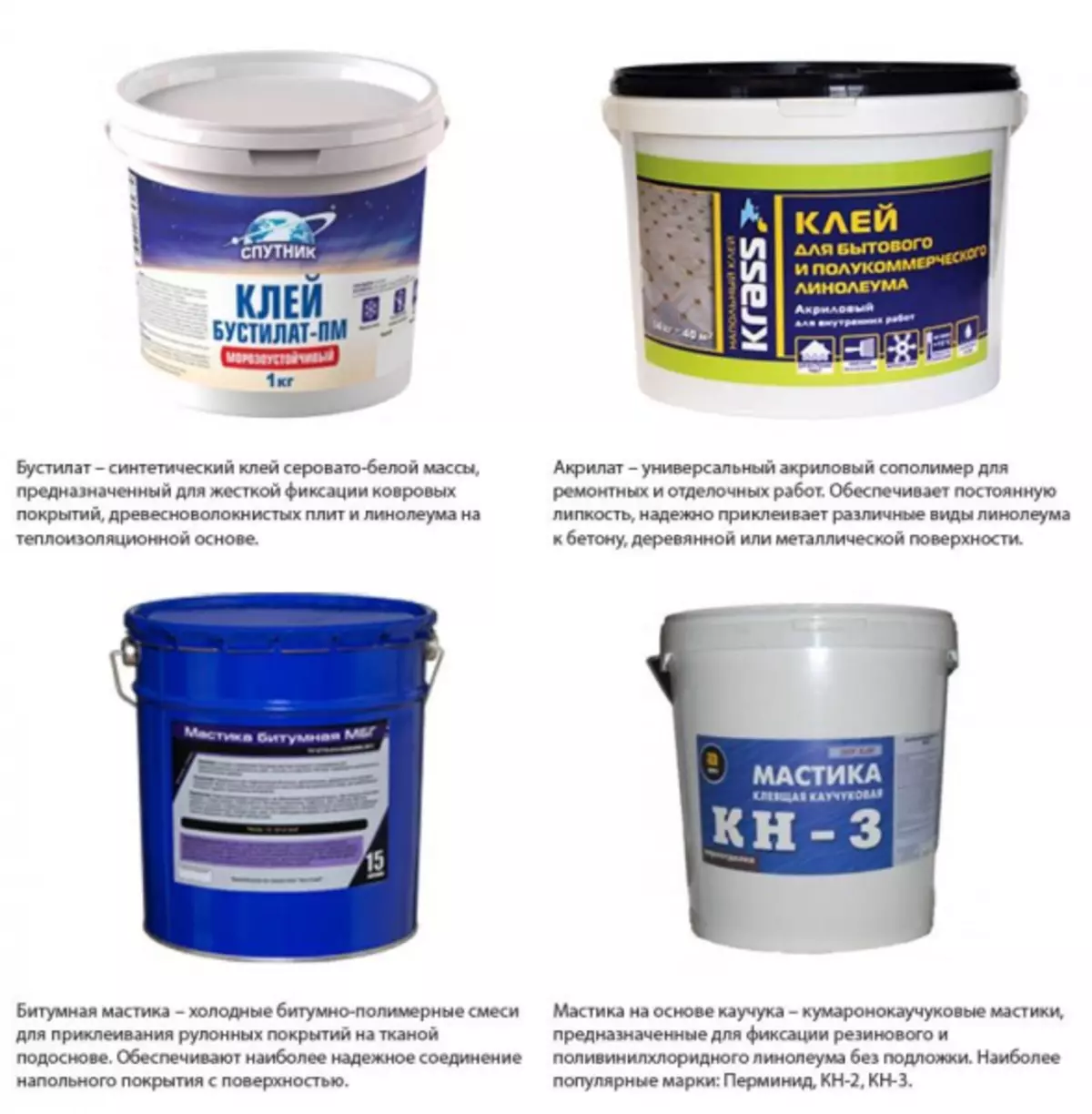
Types of linoleum adhesives
The glue consumption for linoleum is in the range from 0.2 to 0.6 kg per 1m2. Differences depends on the type of mixture and floor.
Dispersion composition
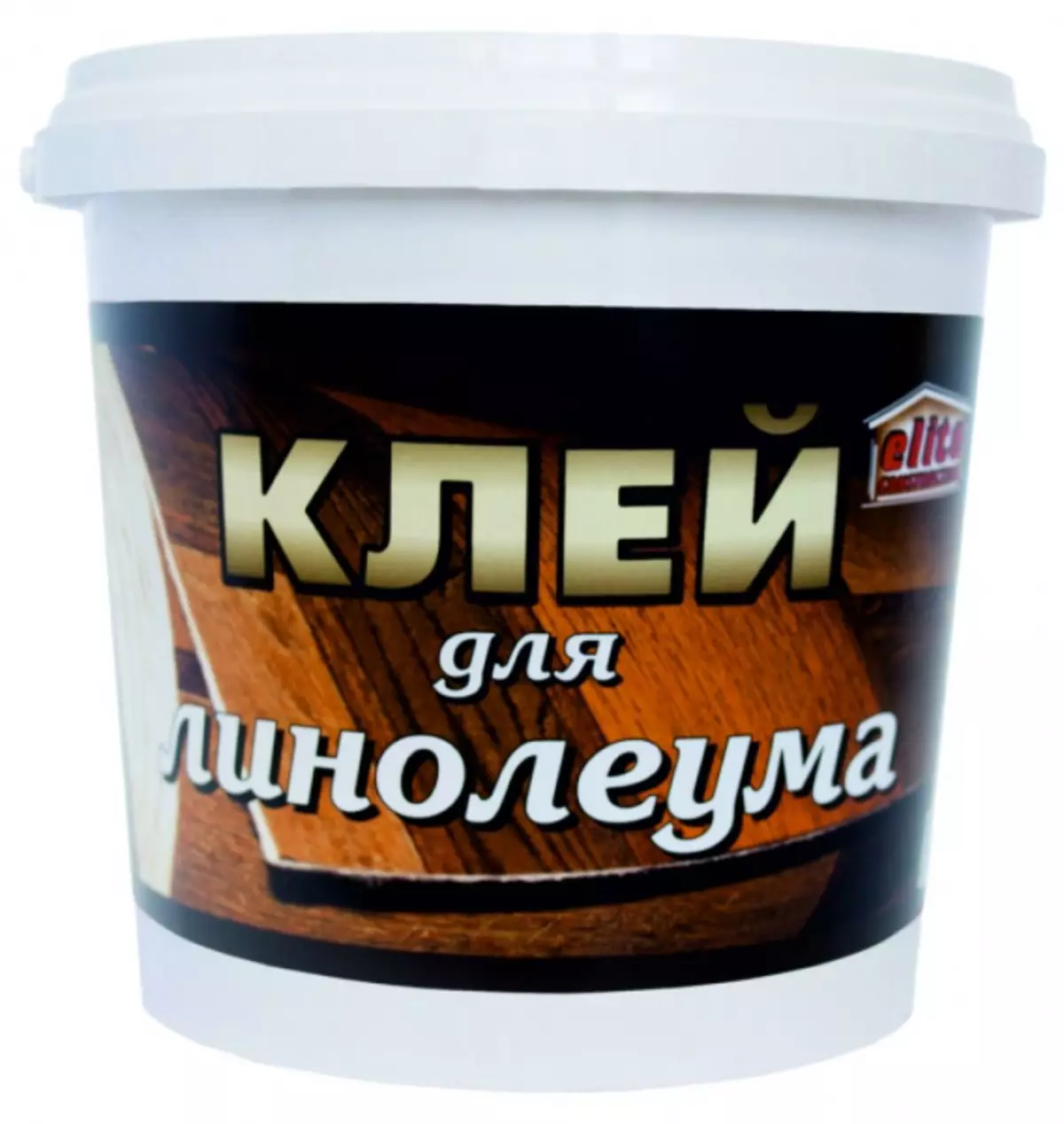
Dispersion formulations do not have an unpleasant odor
The dispersion composition is produced on a water basis with the addition of acrylic, chalk and latex. It is environmentally friendly, does not have a sharp smell and is recommended for use in residential buildings.
The most famous are 3 types of dispersion mixtures:
- Bustylate. Is a universal solution. Consists of chalk and latex. Used for flooring of coatings made from felt.
- Acrylate. The basis of the solution is the thermoplastic resin. An important characteristic of the mixture is a high viscosity rate. Used to coating on the basis of fiber, jute or synthetics. Recommended for use in premises with a large load on the floor. The composition will provide a reliable clutch of linoleum with the base.
- Gumilaks. It is made on the basis of latex and rubber. It is used for natural linoleum flooring. It is also often used for coatings based on felt and synthetics.
Consider that the dispersion glue has a very significant disadvantage. In a low temperature or high humidity, it completely loses its properties.
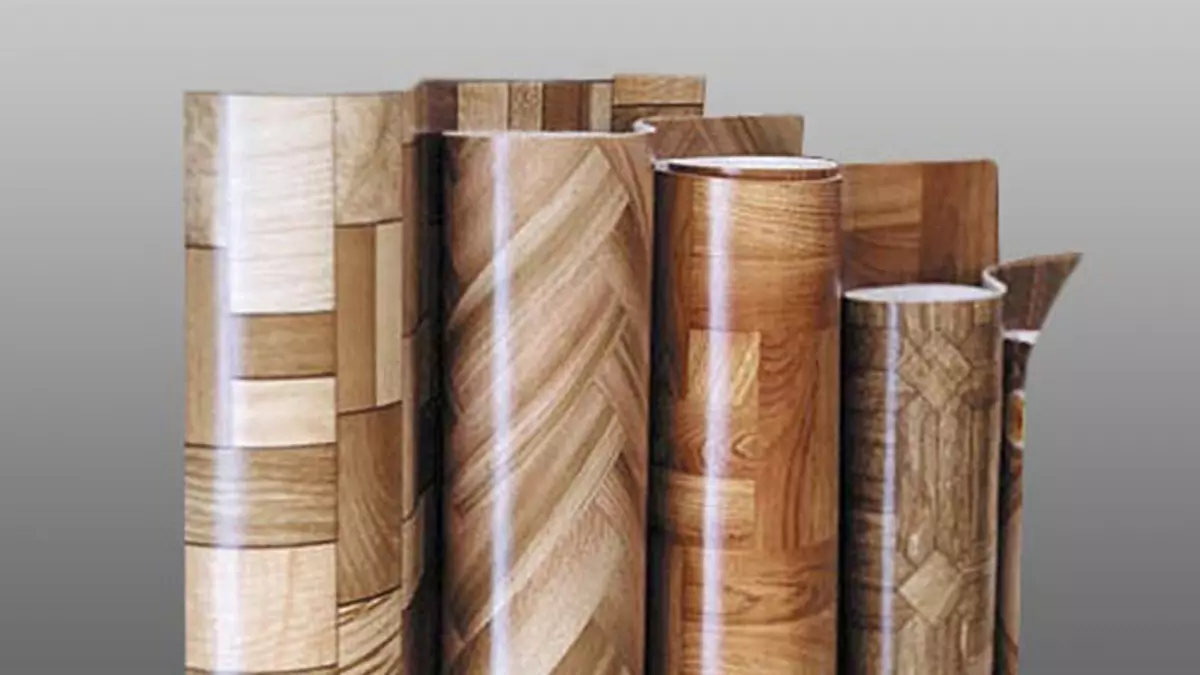
After freezing, the glue will lose elasticity and simply will reveal, and because of the moisture, the linoleum can begin to rejoice.
The consumption of such an adhesive substance is about 0.3 kg per 1m2. At the same time, you can easily wash the solution using ordinary water. Use dispersion compounds is recommended only in well-heated rooms. The humidity indicator should not exceed the mark of 60%. The laying method using dispersion composition can be seen in the following scheme.
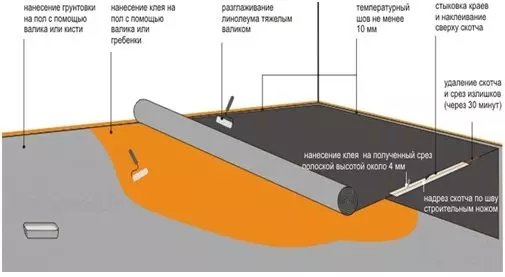
Reaction composition
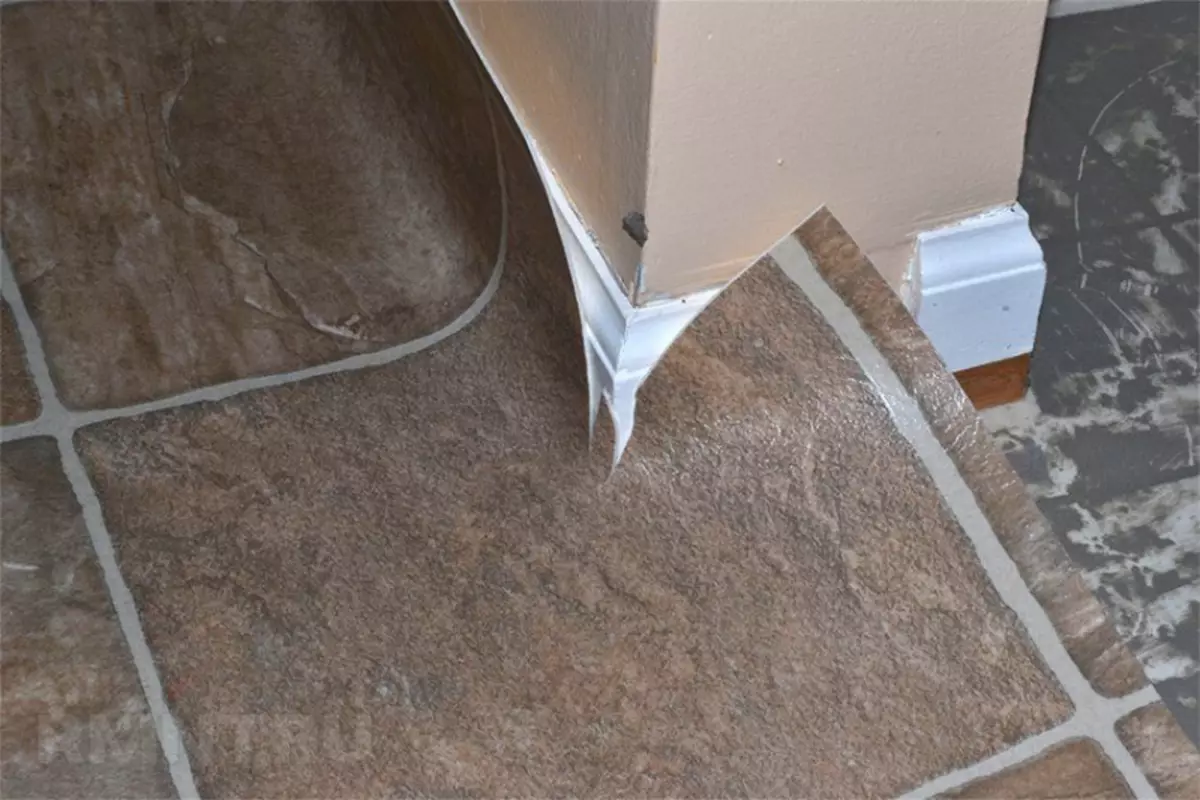
Epoxy glue is very plastic
Such glue is produced on the basis of two components - polyurethane and epoxide. Due to the chemical reaction and the adhesive effect occurs. Working with coatings with the use of such mixtures is called cold welding.
The advantages of this composition are the high level of plasticity, moisture protection and preventing the shrinkage of the floor covering. Professionals recommend using such a solution to work with commercial linoleum. At the same time, you will ensure high strength and protection against mechanical damage.
Consider that the reaction solution has a high fire hazard. In addition, it has a strong specific smell. The use of such a mixture in residential premises is extremely recommended.
The flow of the reaction glue for linoleum on 1m2 is already slightly higher and is approximately 0.4 kg. The composition of "Bustilat" also has a very high consumption, which is about 0.5 kg. For details on the choice of glue, see this video:
Criteria for choosing glue
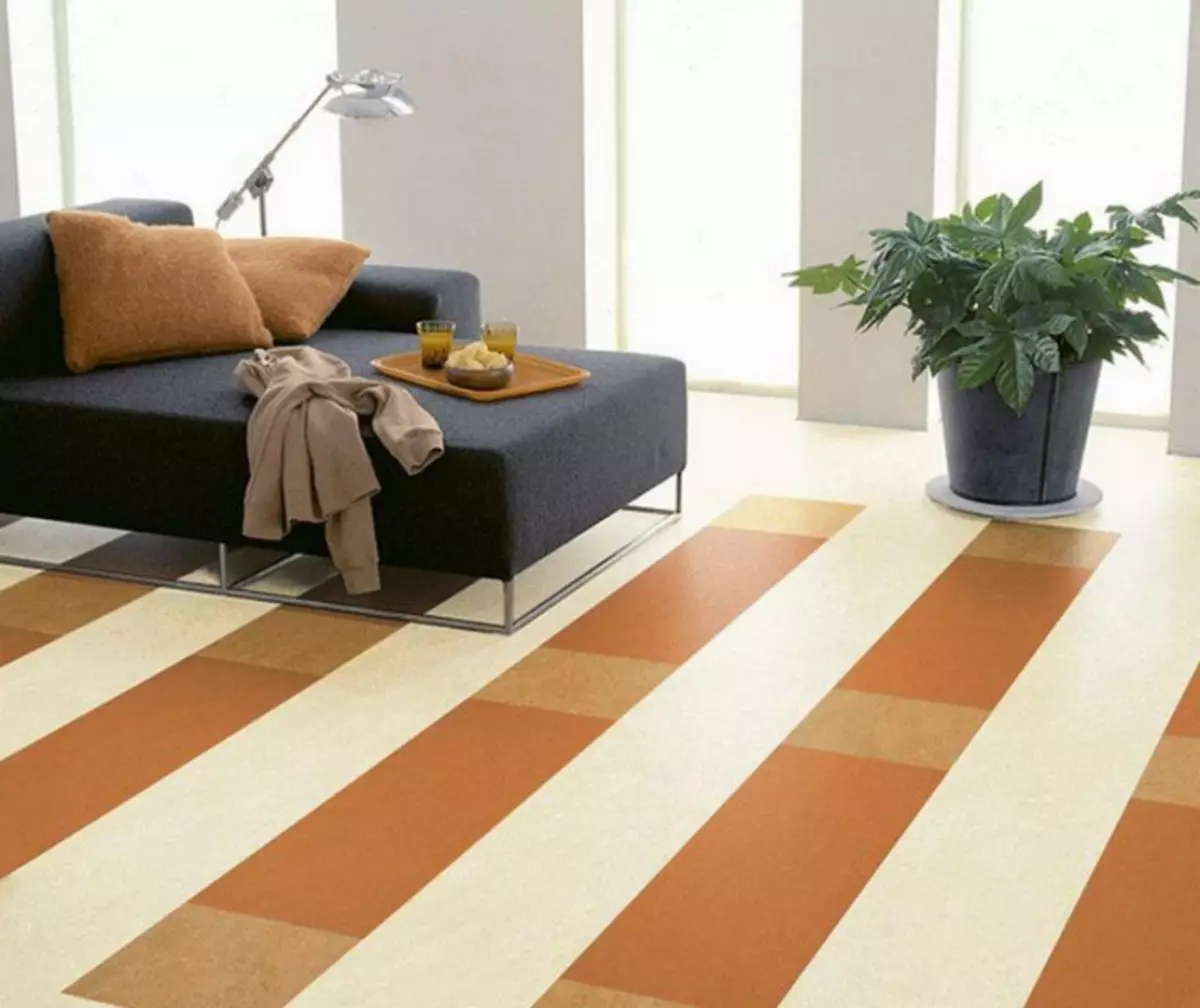
If the linoleum is placed in one web, then use dispersion formulations
When purchasing adhesive mixtures, it is necessary to take into account the following factors:
- Type of base. The floor may be absorbed (based on concrete and cement) or inevitable (based on marble) moisture. For absorbing surfaces, adhesive is suitable based on water dispersion. It is used for cement, concrete or wooden surface. If the floor does not absorb moisture, the reactionary formulations need to use.
- House area. For small rooms, laying linoleum can be made by one web. In this case, the dispersion solution is perfectly cope with gluing, which does not have solvents.
- View of the coating. The glue must be chosen depending on the characteristics and properties of the linoleum. A roller usually indicates recommendations for the choice of adhesive substance.
As you can see, the use of glue for linoleum is a good solution. The consumption of the substance is low, therefore there will be no special financial costs. The main thing is to correctly select the composition, the result and quality of work depends on this.
Article on the topic: Gypsum ceiling: how to install with your own hands?
